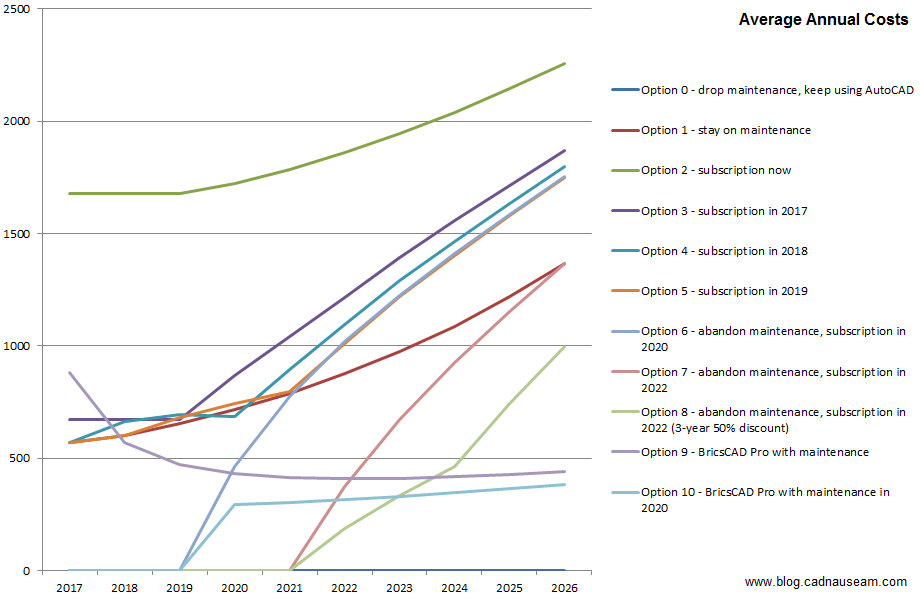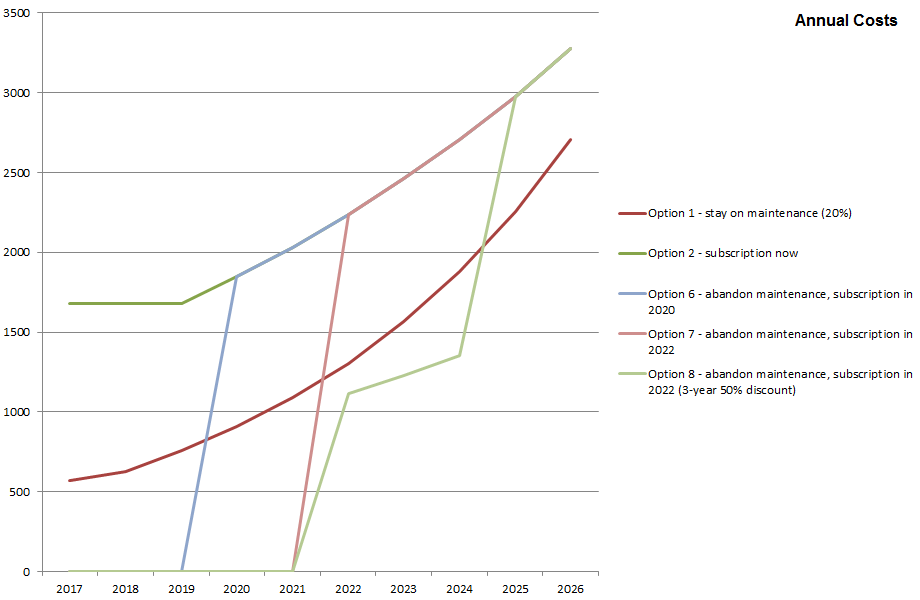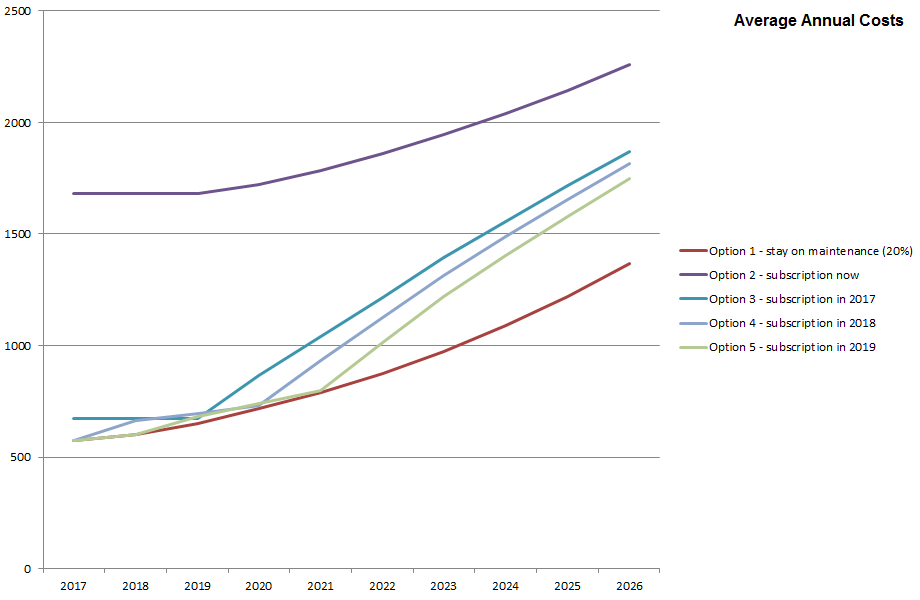Autodesk had announced plans to increase some subscription prices by 30% on 7 November 2017. Resellers have already passed that information on to customers. Here’s the detail of what was going to happen:
Three Important Changes to Subscriptions with Multi-User Access
Autodesk is increasing prices on subscriptions with multi-user access to reflect the value and flexibility that sharing licenses provides our customers. As part of this change, we will stop selling new subscriptions with multi-user access for select products.
Beginning November 7, 2017:
- Prices for new and renewing subscriptions with multi-user access for most individual products are increasing by ~17-19%.
- Price for customers to switch from a maintenance plan to an industry collection with multi-user access will increase by ~30%.
- New subscriptions with multi-user access will no longer be sold for Revit, Inventor Professional, and Navisworks Manage
This was basically an attack on multi-user (network) licensed subscription customers. It’s not obvious what Autodesk has against such customers. On the one hand, Autodesk states that sharing licenses provides customers with value and flexibility. On the other, it states that it’s going to stop selling such useful licenses! You might think that such cooperative customers would be spared the worst of what Autodesk has in mind, but apparently not.
Well, now they will be spared. For now, at least. The 30% increase is being cancelled (confirmation from Autodesk’s Felice S can be found here). I’ve asked for clarification on whether the other measures are also being canned.
Edit: Felice has confirmed that only the 30% element of the announcement has been cancelled and the other measures are going ahead.
It’s unclear why Autodesk would announce such increases at this stage. It’s obvious that Autodesk intends to rack up subscription prices hugely at some point in the future, but it struck me as unwise for Autodesk to show its hand this early. We know the prices are going to shoot up, not only because it’s obvious to anyone capable of joining the dots, but also because Autodesk has already done the rack-up-the-prices thing with multi-million increases for angry but trapped Enterprise Agreement subscription customers.
Unfortunately, most Autodesk customers aren’t aware of what has happened to Enterprise Agreement customers. Even among those who do, there are some trusting souls who would discard their valuable permanent licenses to maybe save a few short-term bucks in the vain hope that Autodesk won’t later impose massive price increases on them, too. I’m not sure what would give anyone reason to believe that, but I have seen people express such a view. What the 30% increase did was to destroy such a charmingly optimistic belief.
That’s why the price rise decision has been reversed. Autodesk might state that this flip-flop shows that it is responsive to customer feedback, but that would be bullshit. Although it was hardly a popular move, there has been relatively little angst about this. The 5%/10%/20% maintenance price increases have attracted far more public criticism. There’s no sign of those increases being reversed, so Autodesk, please don’t come the “we’re listening to our customers” crap. If you listened to your customers, you’d still be selling perpetual licenses.
No, this increase has been reversed because it became obvious (thanks to feedback from resellers, not customers) that it was badly mistimed. It gave the game away too soon.
Too late! We noticed.
It’s probably more accurate to call this a postponement rather than a cancellation. Autodesk will impose ~30% price increases on its subscription users just as soon as it thinks it can get away with it. And 30% will be just the start. It’s not a matter of if, it’s a matter of when, how much and how often.
We have also learned that multi-user (network) licenses are distinctly unpopular with someone very important at Autodesk. Why? Because they’re useful to customers! What a bizarre anti-customer culture there must be within parts of Autodesk for somebody to even think this way, let alone communicate it externally.
To sum up, here are the lessons from this episode:
- If you sign up for Autodesk subscription, you’re going to get screwed. Hard.
- The writing is on the wall for network licenses. If your business finds them invaluable, you’re also going to get screwed.
Don’t say you weren’t warned.

























